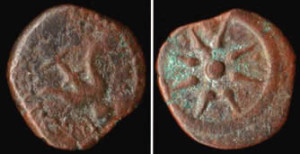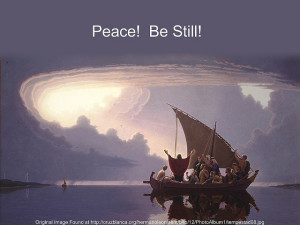The first of 4 posts for chapter 6 of Ask the Beasts: Darwin and the God of Love
The Paradigm of the Lover
If the natural world’s current design is the result of a long history that can be explained by natural laws, how are we to understand the presence and the activity of the Giver of life?
How can this evolving world be understood as God’s good creation?
Prior to knowledge of evolution, the idea of the Creator went hand-in-glove with the model of God as a monarch ruling over his realm. Reflecting the worldview of their day, many biblical and classic theological texts expressed the world’s relation to God through the metaphor of God as Creator/King.
The old metaphor becomes difficult when the theory of evolution makes clear that the world’s gorgeous design has not been executed by direct divine agency (so to speak, ‘from above’) but is the result of innumerable, infinitesimal adaptations of creatures to their environment (‘from below’).
The old metaphor becomes even more difficult when we realize that the variations on which natural selection works occur randomly. The absence of direct design, the presence of genuine chance, the enormity of suffering and extinction, and the ambling character of life’s emergence over billions of years are hard to reconcile with a simple monarchical idea of the Creator at work.
Building from a theology of the presence of the Creator Spirit (as discussed in chapter 5), the view proposed here holds that God’s creative activity brings into being a universe endowed with the innate capacity to evolve by the operation of its own natural powers, making it a free partner in its own creation.
This position differs from deism; the difference lies in the presence of the indwelling Spirit of God, who continuously empowers and accompanies the evolving world.
This differs also from monarchical theism, where the Creator directly dictates or micro-manages the natural world’s every significant move. Far from compelling the world to develop according to a prescribed plan, the Spirit continually calls it forth to a fresh and unexpected future.
To be imaginative for a moment, it is as if at the Big Bang the Spirit gave the natural world a push, saying, “Go, have an adventure, see what you can become. And I will be with you every step of the way.” (p. 156)
What do we mean when we say, ‘God is love’?
The ancient Christian affirmation – ‘God is Love’ – testifies to the experience of God’s love in the history of Israel, made manifest in Jesus Christ, and in the ongoing gifts of the Spirit in the world, even to our own day.
To develop a theology of God’s action in the world, this history functions as an illuminating starting point and ongoing bedrock for reflection. For all Christian theology, the gospel is good news. The love of God is a saving, healing, restoring power that benefits human beings:
• Irenaeus (2nd century) – “The glory of God is the human being fully alive.”
• Bernard of Clairvaux (12th century) – The Creator’s love enhances human autonomy: “What was begun by grace alone, is completed by grace and free choice together…”
• Karl Rahner (20th century) – Radical dependence on God and the genuine freedom of the creature increase to the same degree. The deep union of Jesus’ human nature with divine nature did not make him a robot but constituted him a genuine human being, with the integrity of his own freedom. Rahner reasons that the same dynamic holds true for all human beings.
And now, what about evolution?
Take these insights about God’s loving grace, that run through Christian theology from the 2nd to the 12th to the 20th century, and now extend them to the origin of species:
Christians believe that Jesus’ love, shown in his life, suffering and death, was characteristic of God’s way: compassionate self-giving love for the liberation of others. If this is true of God, we can expect to see God’s power not as controlling but as cruciform love – love that empowers others. Couldn’t it be that since the Spirit’s approach to human beings powerfully invites but never coerces, the best way to understand God’s action in the evolution of the natural world is by analogy with how divine initiative relates to human freedom?
Since gracious divine action reveals the character of God, then the holy Mystery who creates, redeems, and sanctifies the world brims over with the most profound respect for creatures. Divine love unfailingly manifests itself not as coercive ‘power-over’ but as ‘power-with’ that energizes others.
Compassionate, cruciform love brings flourishing to all creatures. Among humans, a mature loving relationship builds up the strength of personal autonomy in those loved, whether they be on an equal footing, like spouses or friends, or at different stages of life like parents and children, students and teachers. Rather than suppressing the gifts of the other, love brings about their flourishing. In our fractured world love is never perfect, always mixed with other forces. On balance, however, its effect is so life-giving because its unifying bond brings about profound growth toward genuine autonomy.
The last chapter concluded that far from being distant from the divine, the world is the dwelling place of God. This chapter charts a path from the activity of the Spirit, Who is love, to the understanding that the evolving world, operating without compulsion according to its own dynamics, works freely with the incomprehensible God in bringing forth the fullness of its own creation.
Recall how biological evolution occurs over billions of years: life moves in the direction of complexity.
While unpredictable in advance, the sequence of life’s development can be reasonably understood in retrospect as the working out of innate propensities, with which the universe is gifted from the beginning.
This whole process is empowered by the Creator, Whose love freely gifts the natural world with creative agency.











